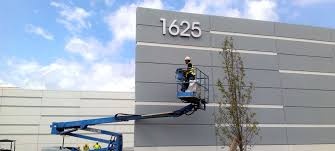Introduction
When most people think about signs, they picture the finished product—the colors, the fonts, the way it catches the eye. What they don’t see is the journey from concept to installation, and how every step in between plays a role in whether the sign truly works in its intended space.
Sign install is more than the final step in the process. It’s where design, engineering, and craftsmanship converge to turn a visual idea into a physical object that will be seen, read, and remembered for years. Without proper installation, even the most stunning design can fail to serve its purpose.
In modern spaces—where architecture, lighting, and foot traffic patterns can be complex—the precision of installation becomes even more critical. The angle of a wall-mounted sign can affect legibility. The height of an ADA sign can determine compliance. And the placement of directional signage can mean the difference between a visitor finding their way easily or feeling lost.
The Process Begins with Site Evaluation
Every successful sign installation starts long before any tools are unpacked. A professional sign company arrives prepared—with measurements, blueprints, and a clear understanding of how the environment will interact with the design.
Factors such as sunlight exposure, viewing distance, and surrounding décor are carefully considered. The goal isn’t simply to attach a sign but to position it where it performs at its best, ensuring maximum visibility and impact.
ADA Compliance and Accessibility
For ADA signs, installation is as much about regulation as it is about functionality. These signs must meet specific standards for height, tactile features, and placement to ensure accessibility for all individuals.
Accurate installation not only keeps businesses compliant but also reflects a commitment to inclusivity—making spaces easier to navigate and more welcoming for every visitor.
Material Handling and Specialized Equipment
Different materials require different handling techniques. A large outdoor sign might need heavy lifting equipment and secure anchoring, while a delicate indoor display demands precise handling to preserve its finish.
From brushed aluminum to acrylic panels, each material comes with unique installation requirements to ensure both safety and longevity.
The Role of Technology in Modern Installs
Sign installation has evolved alongside technology. Digital displays, LED-lit signage, and modular systems now require installers to have skills in wiring, electronics, and even programming.
This shift means that modern installers are not only craftsmen but also technicians, capable of managing complex systems that extend beyond traditional mounting.
Precision and Alignment
The human eye is quick to detect when something is misaligned. Even a slight tilt can affect how a sign—and by extension, the business—is perceived.
Professional installers use laser levels, templates, and precision tools to achieve flawless alignment, ensuring the finished product looks professional and inspires confidence.
Brand Consistency Across Locations
When a brand updates or rolls out new signage across multiple locations, consistency is critical. Installers follow strict brand guidelines that define everything from color accuracy to mounting height, ensuring a unified look everywhere the brand is represented.
Final Inspection and Quality Assurance
After installation, a professional team conducts a final inspection. They confirm that the sign is securely anchored, lighting functions properly, and the placement meets both aesthetic and functional goals. This step ensures the sign will continue to perform and look its best for years to come.
Conclusion
DesignElement Raleigh understands that sign install isn’t just a technical step—it’s an extension of the creative process. The way a sign is placed can elevate its design or diminish its impact. That’s why installation is treated as a craft in its own right, with precision, attention to detail, and presentation at the forefront.
In the end, a sign is more than a marker—it’s a statement. Whether it’s a striking outdoor landmark or an ADA sign that ensures accessibility, every installation is an opportunity to communicate something important. When done with skill, that message is delivered clearly, confidently, and for the long term.






